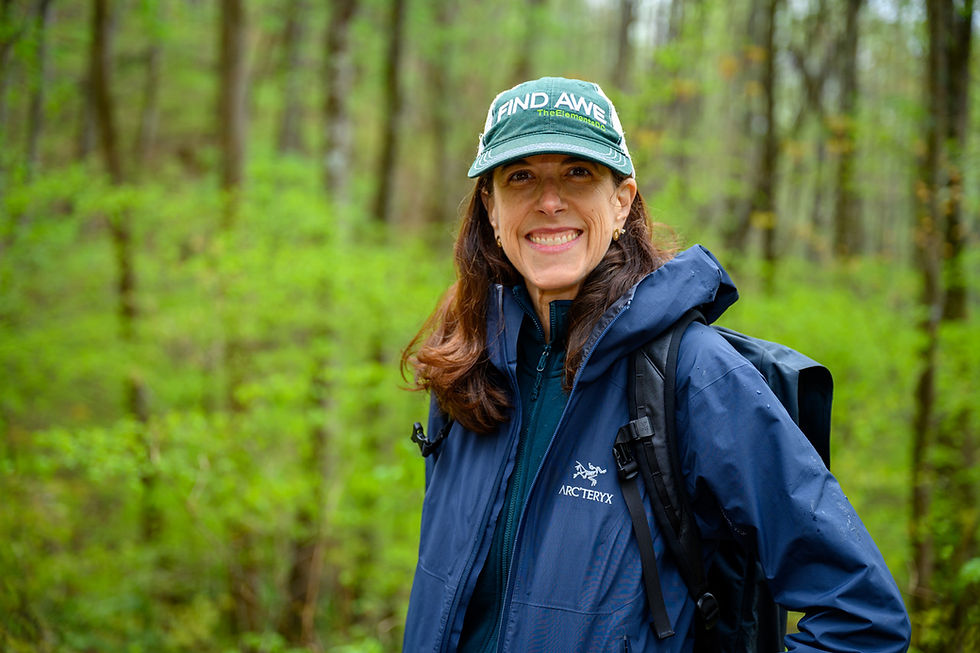Outside Magazine’s December 2012 Article on “The Nature Cure” Sheds Light on the Emerging Field of F
- hikingresearch
- Nov 14, 2012
- 2 min read
Outside Magazine’s December 2012 issue includes an in-depth article by Florence Williams entitled “The nature cure: Take two hours of pine forest and call me in the morning.” Williams describes the emerging focus on the connection between nature and health as the “slow nature movement.” The article is the most complete review of its kind in a magazine that I have found, and pieces together the research taking place around the world. She cites the work of Alan Logan, Richard Louv, Rachel and Stephen Kaplan and others who have helped raise awareness of the links between nature and health.
Williams visited Japan to learn firsthand about the practice of shinrin yoku, or forest bathing, which is walking in nature to obtain the health benefits. Shinrin yoku is a Shinto and Buddhist inspired practice that “lets nature enter the body through all five senses.” She discovered that forest bathing has been standard preventive medicine in Japan for thousands of years. The stressed masses from Tokyo and other urban areas flee to the forest for rejuvenation, trying to escape “karoshi” or death by overwork. Between 2.5 million and 5 million visitors walk the “Forest Therapy Trails” in Japan each year. The Japanese government currently has 48 “Forest Therapy Bases” with plans to expand to 100, and has spent over $4 million on forest bathing research since 2004. The South Korean government believes in the practice as well and is investing $140 million for a National Forest Therapy Center to be completed by 2014.

Autumn leaves in the Blue Ridge Mountains of North Carolina (USA) Photo by Mark Ellison
Williams interviews Yoshifumi Miyazaki, a physiological anthropologist and vice director of Chiba University’s Center for Environment, Health and Field Sciences. Miyazaki emphasizes that spending time in nature helps facilitate a feeling of comfort because our rhythms become synchronized with those of the environment. During her visit to Japan, Williams also talks with Dr. Qing Li, Senior Assistant Professor at Nippon Medical School in Tokyo who has done extensive research on how spending time in forests impacts the immune system. Dr. Li is asked how he utilizes nature for health and describes using cypress oils for aromatherapy nightly. He also suggests taking a vacation to nature, not the city; at least one weekend a month visiting a natural area; visiting a park at least once a week; trying to walk under trees when walking in urban areas; and going to quiet places, preferably near water.
Williams also reviews some of the recent research linking time in nature to improved health, and provides suggestions for how to connect with nature. This article is an excellent overview of where the emerging field of forest medicine is headed. A key observation made by Williams is that in the United States “researchers are mostly showing people pictures of nature, while the Japanese are pouring it into every orifice.” To validate the claims that “nature heals” and gain acceptance as a viable preventative healthcare option, the Japanese approach to research must be more fully embraced in the United States. As research continues to reveal “a nature cure”, hopefully more in the U.S. will take notice and loosen their grip on their smart phone long enough to experience the benefits nature has to offer.
#forestbathing #forestmedicine #ChibaUniversityCenterforEnvironment #Taketwohoursofpineforestandcallmeinthemorning #Thenaturecuretaketwohoursofpineforestandcallmeinthemorning #OutsideMagazine #aromatherapy #Outsidemagazineandthenaturecure #florencewilliams #shrinyoku #outsidemagazineandshinrinyoku #ForestTherapyTrails #NipponMedicalSchool #QingLi #Thenaturecure #ForestTherapyBases








Comments